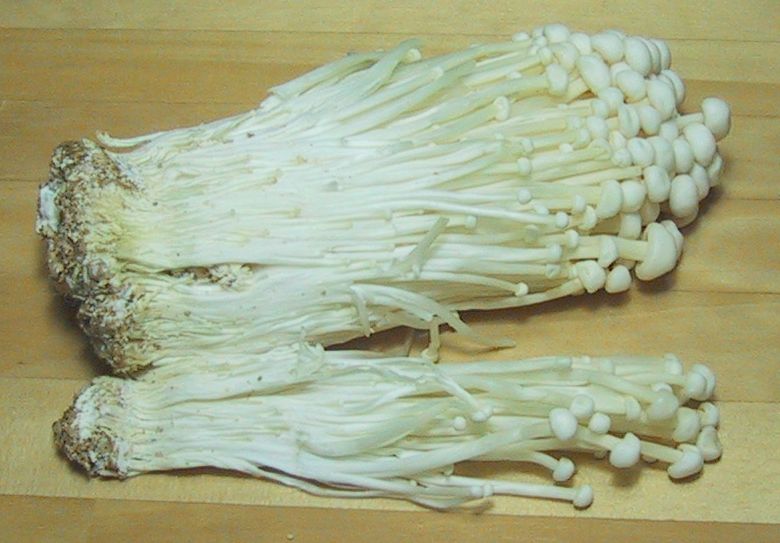Caution: this is NOT A BEGINNER's mushroom.
This mushroom cannot be positively identified by observing features alone. A spore print must be made for positive identification. This mushroom has many lookalikes, some of which are deadly, others will make you sick. Use the following tips as a guideline only, but confirmer your identification with other reliable sources and a trusted local expert.
As always, it's your responsibility to make 100% sure of any while plant or mushroom you consume.
Identification difficulty level: Intermediate
Flammulina velutipes, commonly known as the velvet foot, velvet shank, velvet stem, or winter mushroom, is officially a cold-weather fruiting fungus, which can be harvested even in the dead of winter in some places. This makes it a great find for winter survivalists, or for any forager who just can't get enough, and wants to hunt year round.
 |
| Cultivated Flammulina velutipes, called enoki mushrooms. Image courtesy of Wikipedia user Chris 73, via Wikipedia Commons |
Do you know the enoki mushroom?
If you know the skinny white enoki mushrooms you buy in the store, then you actually know the velvet shank, kind of. The enoki is also Flammulina velutipes, but it's cultivated in very specific ways, to make it look, and in many ways taste, like a different mushroom. By growing it in complete darkness, it turns white instead of cinnamon brown, and forcing the stems to grow long and skinny keeps them tender, where in the wild they are tough and chewy.Keep reading to learn more on how to accurately identify the velvet foot mushroom, and avoid the very similar-looking, DEADLY Galerina.



